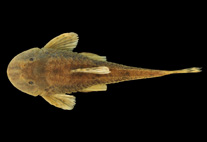Abstract
Epirhyssa Cresson 1865 is a large tropical genus of the family Ichneumonidae. It is the most diverse genus of the subfamily Rhyssinae with about 118 species worldwide. In this study we conducted four long-term field inventories to review the Peruvian Amazonian species of the genus. We provide illustrations, diagnosis and an identification key to the species currently known to occur in the region, including descriptions of 10 new species. In addition, we describe the female of E. wisei Porter and the male of E. pertenuis Porter, discuss the biogeographical patterns of species richness of the genus and provide new faunistic records for Brazil, Colombia, Ecuador, French Guiana, Paraguay and Peru. The Peruvian Amazonia is, according to our results, among the most species-rich areas in the world for this genus. Some of the new species described in this work were named by the public in Finland and Peru during two innovative competitions to name these beautiful species. The aims of these competitions were to draw attention to the plethora of unknown species lurking in the shades of tropical forests and the necessity to protect these highly diverse areas.

